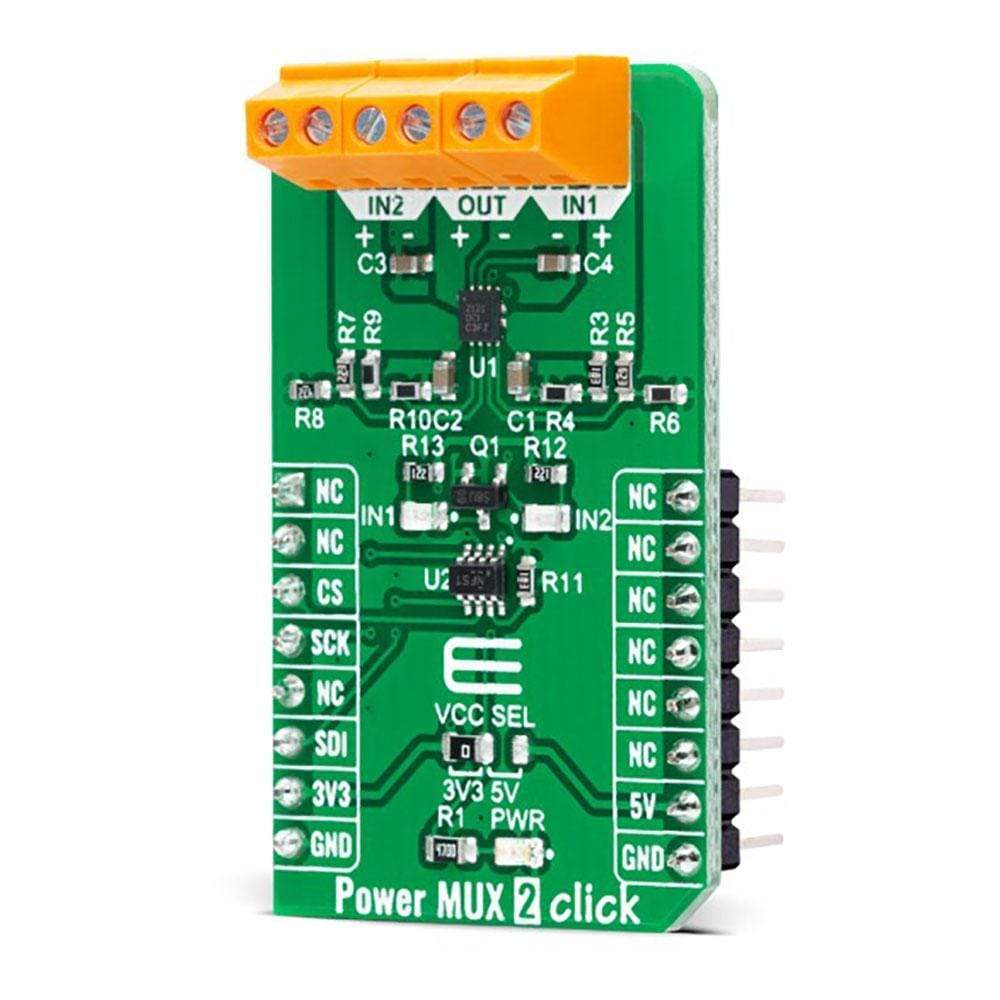
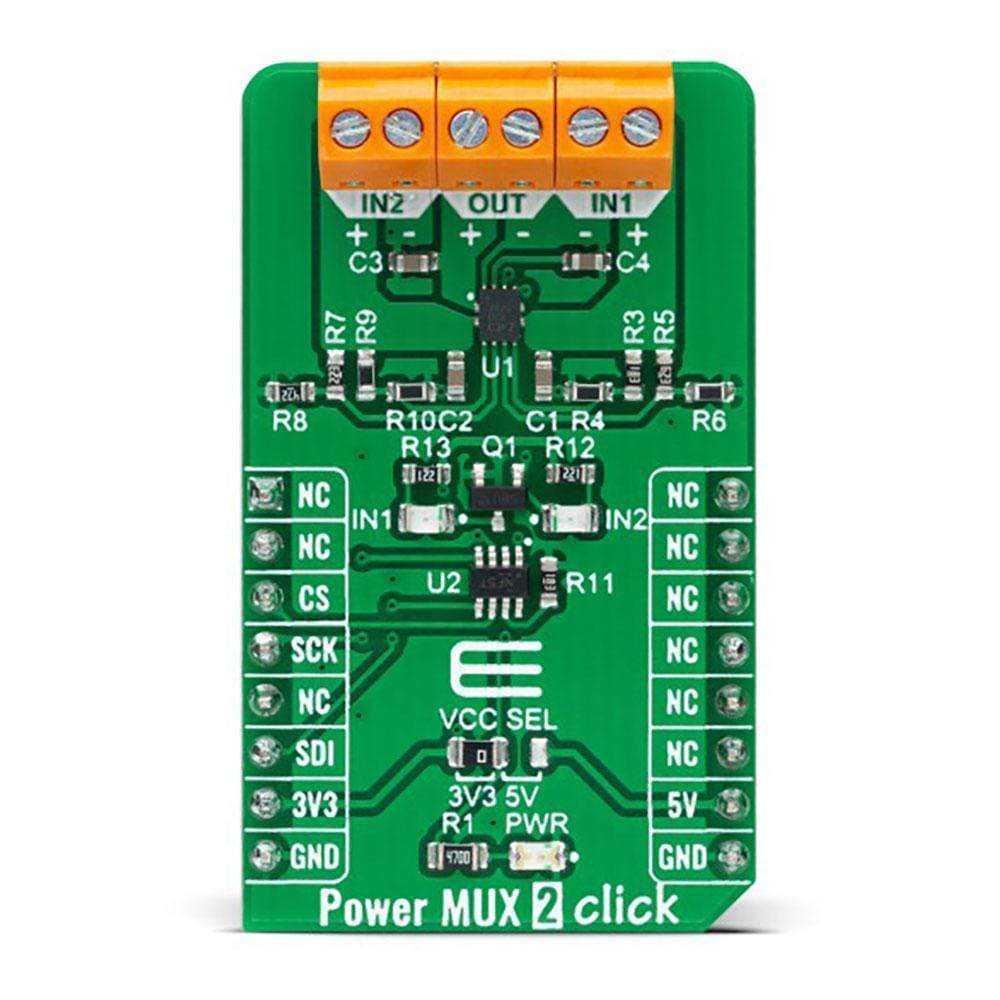
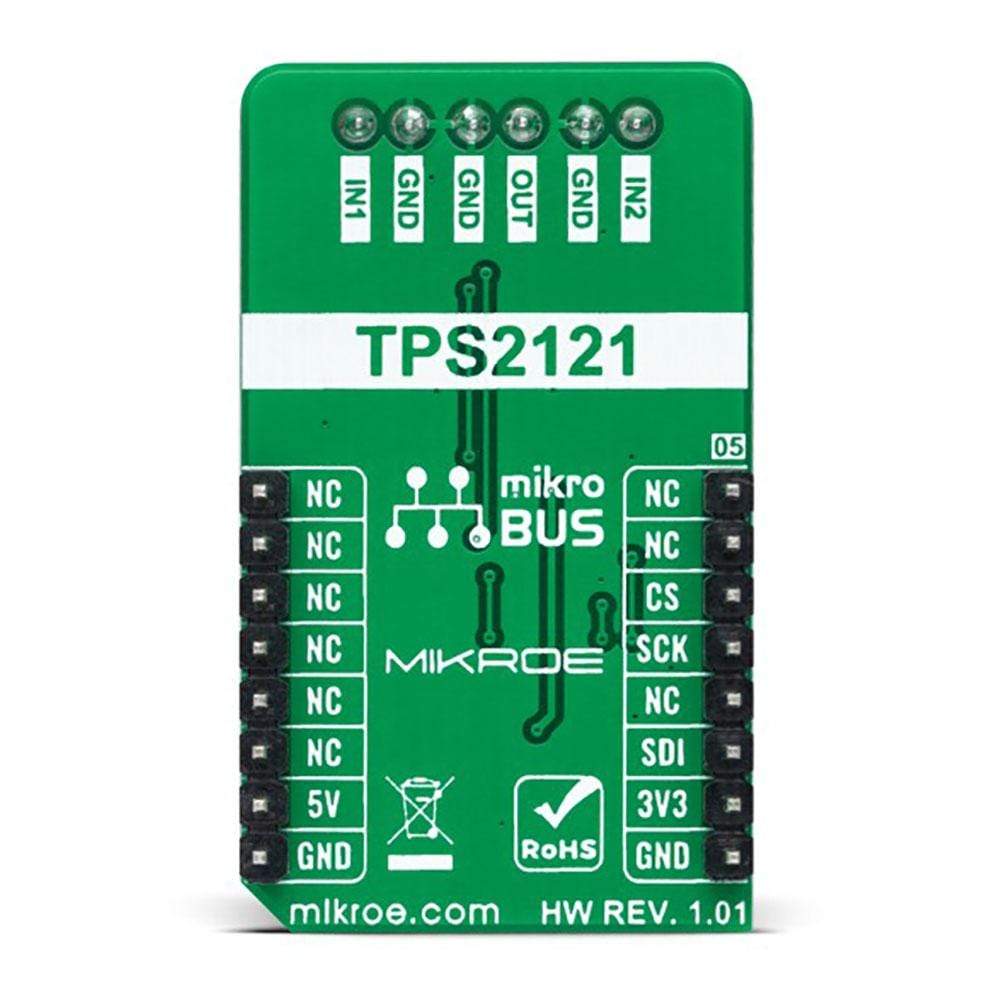
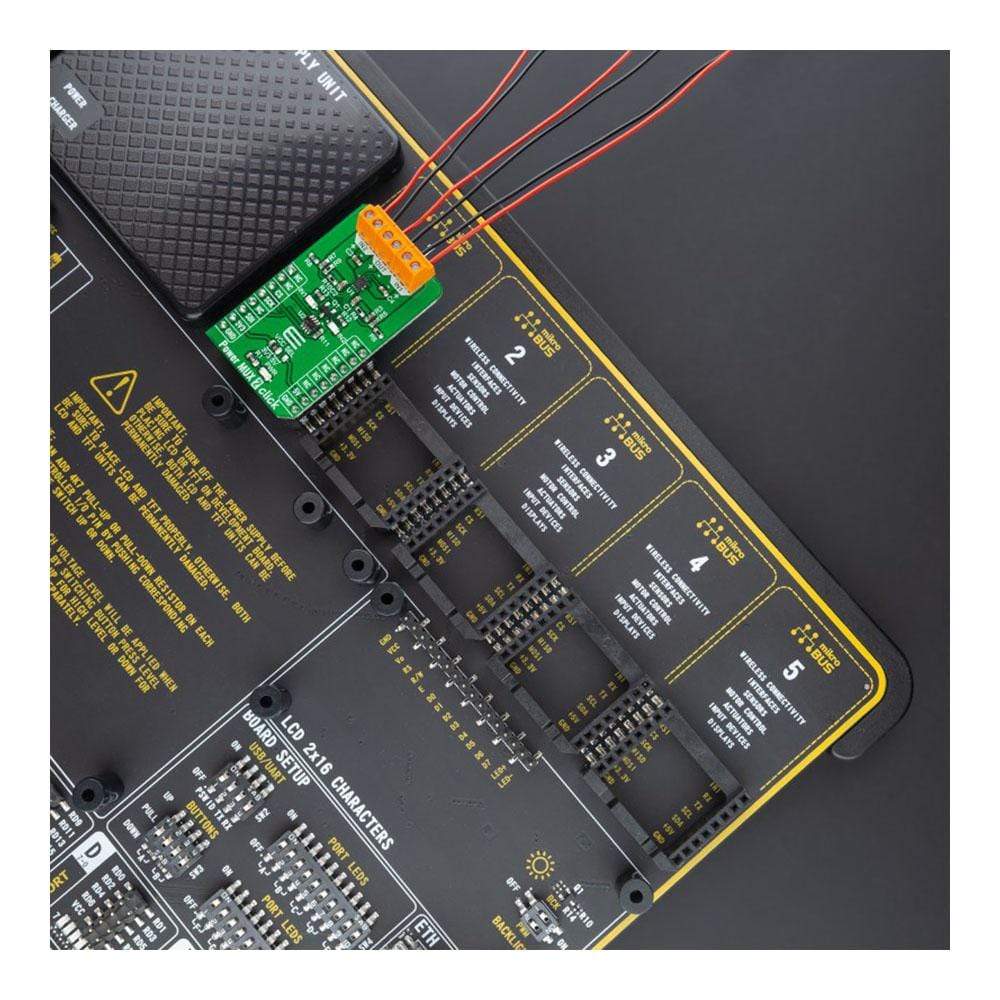
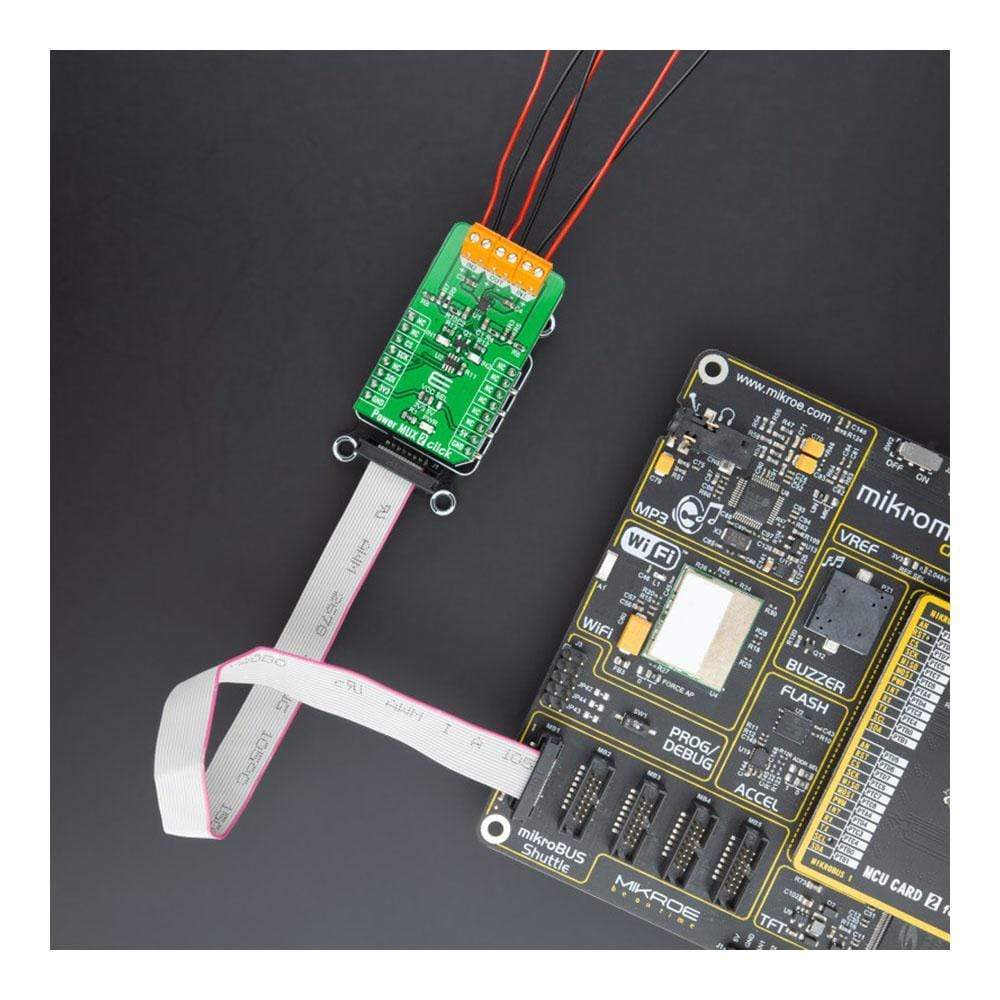
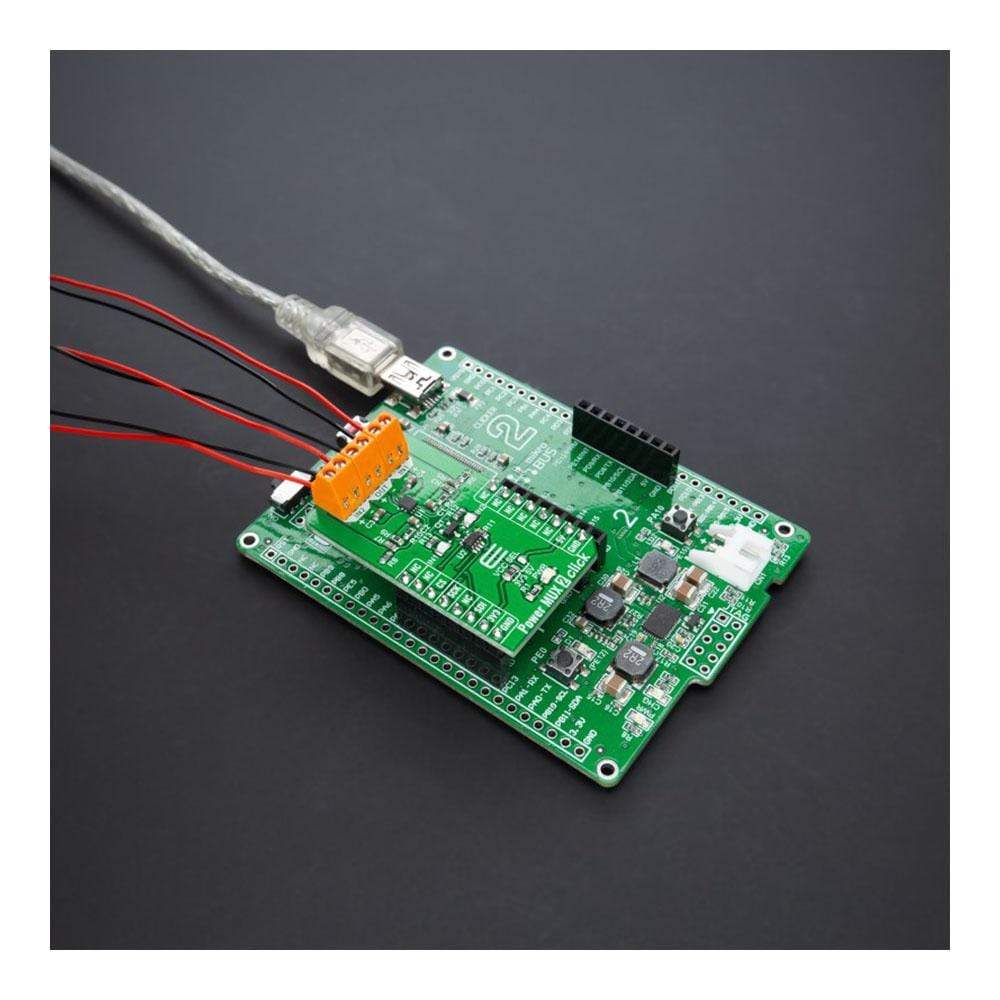
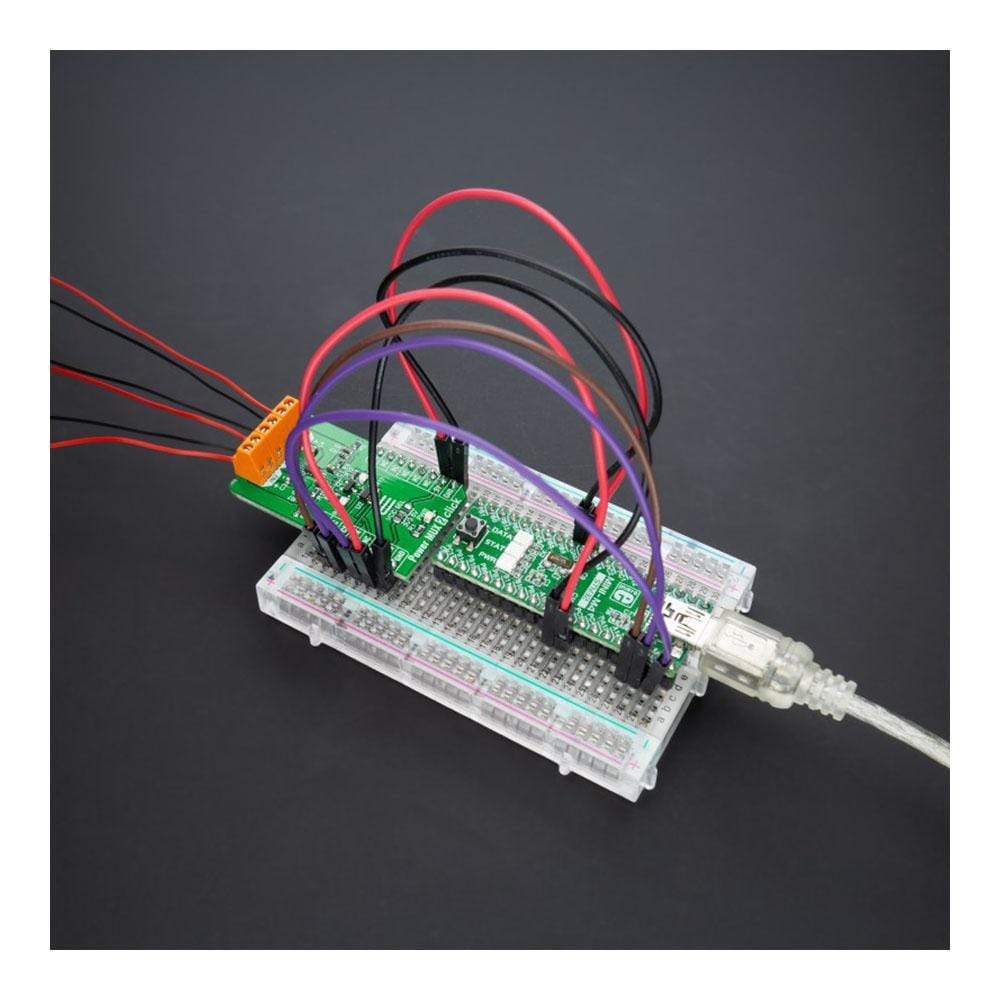
Overview
The Power MUX 2 Click Board™ is a compact add-on board with a highly configurable power mux. This board features the TPS2120, a dual-input single-output power multiplexer with an automatic switchover feature from Texas Instruments. This Click Board™ prioritises the main supply when present and quickly switches to auxiliary supply when the main supply drops. During switchover, the voltage drop is controlled to block reverse current before it happens and provide uninterrupted power to the load with minimal hold-up capacitance. This Click Board™ is suitable for backup and standby power applications, input source selection, and various systems having multiple power sources.
The Power MUX 2 Click Board™ is supported by a mikroSDK compliant library, which includes functions that simplify software development. This Click Board™ comes as a thoroughly tested product, ready to be used on a system equipped with the mikroBUS™ socket.
Downloads
Der Power MUX 2 Click Board™ ist eine kompakte Zusatzplatine mit einem hochgradig konfigurierbaren Power-MUX. Diese Platine verfügt über den TPS2120, einen Leistungsmultiplexer mit zwei Eingängen und einem Ausgang und automatischer Umschaltfunktion von Texas Instruments. Dieses Click Board™ priorisiert die Hauptversorgung, wenn sie vorhanden ist, und schaltet schnell auf die Hilfsversorgung um, wenn die Hauptversorgung abfällt. Während der Umschaltung wird der Spannungsabfall kontrolliert, um Rückstrom zu blockieren, bevor er auftritt, und die Last mit minimaler Haltekapazität unterbrechungsfrei mit Strom zu versorgen. Dieses Click Board™ ist für Backup- und Standby-Stromversorgungsanwendungen, Eingangsquellenauswahl und verschiedene Systeme mit mehreren Stromquellen geeignet.
Das Power MUX 2 Click Board™ wird durch eine mikroSDK-kompatible Bibliothek unterstützt, die Funktionen enthält, die die Softwareentwicklung vereinfachen. Dieses Click Board™ ist ein gründlich getestetes Produkt und kann auf einem System verwendet werden, das mit der mikroBUS™-Buchse ausgestattet ist.
| General Information | |
|---|---|
Part Number (SKU) |
MIKROE-4575
|
Manufacturer |
|
| Physical and Mechanical | |
Weight |
0.019 kg
|
| Other | |
Country of Origin |
|
HS Code Customs Tariff code
|
|
EAN |
8606027382246
|
Warranty |
|
Frequently Asked Questions
Have a Question?
Be the first to ask a question about this.







